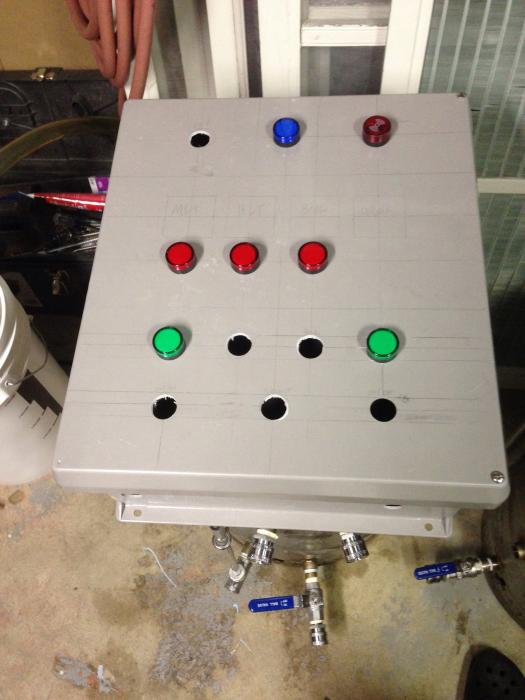micahwitham
Well-Known Member
This may sound like a really stupid question to those who paid attention in physics class...but here goes anyway.
I found these water proof enclosures at the AxMan (for those who don't live in the twin cities, this place is awesome!) for 19.99 that appear to be used for electrical purposes.
In all of my reading on this site about EHerms set ups, I've never seen a panel that's not metal. These are some sort of poly carbonate/hard plastic material.
If my logic is correct, grounding something is essentially making sure that all metal parts that "could" be energized by a stray wire or something, find their way back to the ground wire in your home connected to your main breaker panel.
So, if there is a lug inside of my panel, and I connect all the power going to my kettles and switches to this lug, which is then connected to the ground wire in my power coming into the panel, then in theory all of the potential metal elements are connected to main ground in my home.
Yes...
or you're an idiot but I'm going to be gentle and tell you why you're not correct.
Thanks in advance.
BTW - my build is coming along and packages are arriving at the house daily.
Still looking to get rid of my Brutus10/propane build in the for sale forum.
I found these water proof enclosures at the AxMan (for those who don't live in the twin cities, this place is awesome!) for 19.99 that appear to be used for electrical purposes.
In all of my reading on this site about EHerms set ups, I've never seen a panel that's not metal. These are some sort of poly carbonate/hard plastic material.
If my logic is correct, grounding something is essentially making sure that all metal parts that "could" be energized by a stray wire or something, find their way back to the ground wire in your home connected to your main breaker panel.
So, if there is a lug inside of my panel, and I connect all the power going to my kettles and switches to this lug, which is then connected to the ground wire in my power coming into the panel, then in theory all of the potential metal elements are connected to main ground in my home.
Yes...
or you're an idiot but I'm going to be gentle and tell you why you're not correct.
Thanks in advance.
BTW - my build is coming along and packages are arriving at the house daily.
Still looking to get rid of my Brutus10/propane build in the for sale forum.



